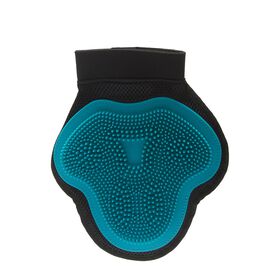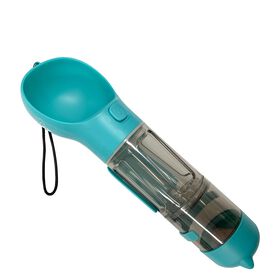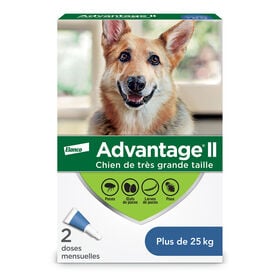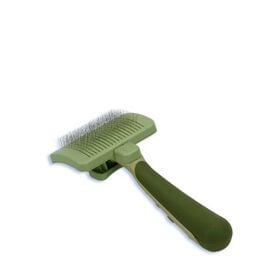The days are getting longer, the snow is starting to melt, and the air is getting warmer… Spring is just around the corner! This is the perfect time to prepare your dog or cat for the new season and ensure a smooth transition after winter.
Whether it’s adjusting their diet, protecting their coat, or anticipating the arrival of parasites, a few simple changes can make all the difference. Discover 10 essential tips to help your pet fully enjoy the return of sunny days, safely and in great shape.

Protect against fleas and ticks as soon as the weather warms up
Did you know that ticks become active as soon as temperatures reach 4°C? With the arrival of spring, these parasites resurface and pose a risk to your pet. A simple walk in nature or a park is enough for a tick to latch onto their fur.
And what about cats? Even if they spend less time outside than dogs, they can still pick up ticks, especially if they have access to a garden or a balcony with plants. Be sure to use a parasite treatment suited to your feline.
-
Schedule a post-winter health check-up
Winter can take a toll on your pet’s health, and early spring is the perfect time for a check-up. A visit to the vet can help:
- Detect potential joint problems caused by the cold, especially in older pets or those with arthritis.
- Check their weight after a less active winter and adjust their diet for the warmer months.
- Perform a dental exam to identify tartar buildup or pain that could affect their well-being.
- Update vaccines and parasite treatments to protect them against fleas and ticks.
- Assess their skin and coat condition, especially after cold months that can dry out the skin and increase shedding.
A simple check-up can make all the difference in ensuring your pet starts the new season in good health and safety.
-
Watch for seasonal allergies
Pollen, grass, dust… With spring’s return, some pets suffer from allergies. If your pet sneezes often or scratches more than usual, they may be sensitive to spring allergens. A vet can advise you on the best solutions.
-
Refresh their living space
Spring cleaning time! Take this opportunity to clean their resting area, wash their blankets, disinfect their bowls, and replace any worn-out toys. A clean environment contributes to their health and well-being.
-
Check their identification
With spring’s arrival, dogs and cats are often more eager to explore. Whether it’s a dog wandering further on a walk or a cat resuming their outdoor habits, it’s essential to ensure their identification is up to date.
Check their tag and microchip. Make sure your phone number is correctly listed and legible to help them return home if they get lost.
Renew their city tag. In many cities, dog registration is mandatory and must be updated annually.
-
Take care of their coat and paws

Spring marks the return of shedding! Regular brushing helps remove dead hair, keeps their coat healthy, and reduces the risk of hair ingestion in cats.
A good bath after winter can feel great! Mondou customers can take advantage of the Doggie Wash, a convenient service to wash their dog without the mess at home.
Don’t forget their paws! After walking on snow, ice, or salt, their paw pads may be more sensitive. Apply a moisturizing balm to protect them and consider regular nail trims. The Nail Clipping service in-store can help.
-
Clean up after walks
With spring’s arrival, sidewalks and parks are often covered in residues like salt, sand, and other winter debris. These substances can irritate your pet’s paw pads, and if they lick them, they risk ingesting harmful particles.
Quick tip: No need for a full bath after every walk! Fill a small bowl with warm water, let their paws soak for a few seconds, then wipe them with a towel. This helps remove impurities and prevents irritation.
-
Reintroduce exercise gradually
If your pet has been less active during winter, it’s important to gradually increase the intensity of walks and playtime. A slow return to activity helps prevent injuries and improves endurance.
-
Adjust their diet
With the return of warm weather, your pet is likely more active than in winter. It may be useful to adjust their portions or choose a diet that better supports their energy needs.
-
Help your cat get moving again after winter
After spending months sleeping more and moving less, your cat may need a little encouragement to regain agility and fitness.
A simple wand toy, feather toy, or laser pointer can stimulate their hunting instincts, encouraging them to run, jump, and sharpen their reflexes.
Create an enriching environment: Add cat trees, wall shelves, or tunnels to encourage climbing and movement. For outdoor cats, provide hiding spots or secure perches where they can observe their surroundings.
À lire aussi : Allergies in cats and dogs: everything you need to know
5 precautions to take this spring

Even though spring brings plenty of wonderful moments, a few precautions will help keep your pet safe:
- Spring plants: Some flowers, like lilies, azaleas, and lily of the valley, can be toxic to pets.
- Standing water: Puddles, ponds, and stagnant water may contain harmful bacteria. Make sure your dog drinks clean water during outings.
- Gardening products: Pesticides, fertilizers, and herbicides are often irritating or toxic. Keep your pet away from recently treated areas.
- Open windows and doors: Make sure your cat or dog can’t escape by securing any openings.
- Insects and wildlife: Spring means increased activity for bees, wasps, and small rodents. Some encounters may be unexpected.
By staying mindful of these small details, you’ll help your pet fully enjoy spring in complete safety.













